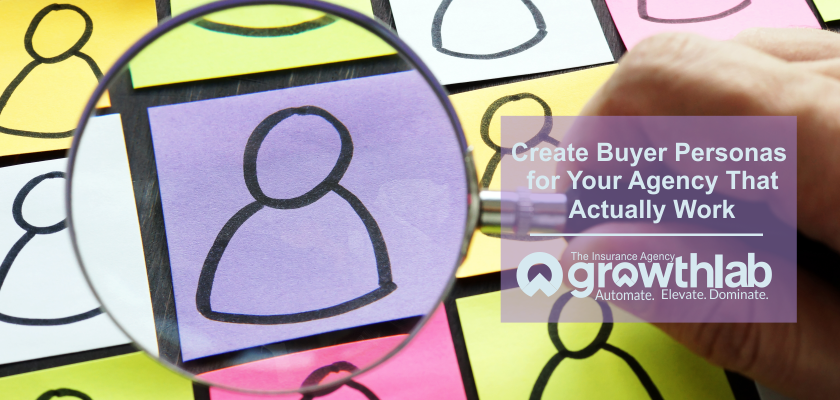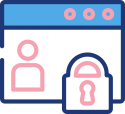How to Create Buyer Personas for an Insurance Agency That Actually Work

Let’s be honest—most insurance agencies don’t really use buyer personas.
Sure, they might have a vague idea of their “ideal customer,” but in practice? Their marketing is about as targeted as a dart thrown in the dark.
And that’s a problem.
In today’s hyper-competitive insurance landscape, generic messaging gets ignored. The agencies that win aren’t the ones shouting the loudest—they’re the ones speaking directly to the needs, fears, and motivations of their perfect clients.
That’s where buyer personas for an insurance agency come in.
But not the cookie-cutter personas you’ll find in a marketing textbook. You need personas built from real data—personas that influence everything from your insurance agency website content to your social media strategy to how you position your agency in the marketplace.
In this post, I’ll show you exactly how to create buyer personas that don’t just sit in a marketing plan collecting dust—but actually drive leads, sales, and agency growth.
What is a Buyer Persona?
A buyer persona is a fictional yet research-based representation of your ideal customer. It includes key demographics, motivations, pain points, and behaviors to help insurance agencies create marketing and sales strategies that resonate with the right audience.
Instead of making assumptions, buyer personas allow agencies to tailor their messaging, improve customer engagement, and increase conversion rates by speaking directly to their target audience’s needs.
Buyer personas also help agencies identify who is not a good fit, ensuring they spend their time and resources on the most profitable customers.
Why Buyer Personas Matter for Insurance Agencies
Most insurance agencies struggle to stand out in a crowded market. The key to breaking through the noise? Relevance.
A strong buyer persona ensures that your marketing is customer-focused, not product-focused—helping you:
- Attract the right customers by addressing their specific concerns.
- Improve lead quality so you don’t waste time on unqualified prospects.
- Enhance sales conversations by speaking to real pain points.
- Increase customer retention by offering policies tailored to their needs.
When you understand your ideal customers deeply, you also reduce churn, improve customer loyalty, and make sales conversations more productive.
Simply put: When you market to everyone, you connect with no one. Buyer personas allow you to narrow your focus and speak directly to the right people.
Download The Free Buyer’s Persona Templates
Start attracting the right clients and closing more policies—download your free Buyer Persona Template now.
Step 1: Forget About You. It’s About Them.
Most insurance agencies build their marketing backward.
They start with what they want to sell instead of what the customer actually needs.
Think about it.
A customer doesn’t wake up thinking, I need a commercial general liability policy today! No, they wake up thinking, What happens if I get sued by a client?
That’s why step one in creating buyer personas for an insurance agency is to stop thinking like an insurance agent—and start thinking like your customer.
How will you do this? Well, you talk to them.
Where to Find Real Buyer Insights
If you’re relying on guesswork to define your ideal customer, you’re already losing. Instead, pull insights from:
- Your existing clients – Who are your best customers? What do they have in common?
- Sales calls and inquiries – What questions do people ask before they buy?
- Google Analytics and social media insights – What topics and content are getting engagement?
- Industry research and forums – Where do your customers hang out, and what are they talking about?
This isn’t about making assumptions. It’s about using real data to build a persona that actually reflects the mindset of your ideal client.
Step 2: Build a Persona That Feels Like a Real Person
Now, let’s bring your ideal customer to life.
Your buyer persona isn’t just a list of demographics. It’s a detailed profile of a real person—with real concerns, real motivations, and real decision-making processes.
Here’s what you need to define:
- The Basics
This is the foundation—age, gender, income level, occupation, location.
Example: Sarah, 38, runs a small marketing consultancy in Dallas, Texas. She has two employees and earns around $250,000 per year.
- The Triggers
What makes them realize they need insurance? A life event? A business milestone? A bad experience?
Example: Sarah just landed a major corporate client, but they require her to have professional liability insurance before signing the contract.
- The Pain Points
What are they worried about? Price? Trust? Understanding coverage?
Example: Sarah is overwhelmed by insurance jargon. She doesn’t have time to compare policies, and she’s worried about buying the wrong coverage.
- The Decision Process
Where do they research? What factors influence them?
Example: Sarah starts with Google. She reads reviews, checks industry forums, and asks for referrals from other business owners before making a decision.
When you create a persona this detailed, you’re no longer marketing to everyone. You’re marketing to Sarah—and that’s powerful.
Step 3: Speak Their Language, Not Yours
The insurance industry loves jargon.
Endorsements, exclusions, declarations—these words mean nothing to your customer.
Your buyer persona should shape how you communicate. If Sarah is worried about coverage complexity, you don’t tell her, We offer comprehensive professional liability solutions.
You say, “We make it easy to get the coverage you need—without the insurance jargon.”
This applies across all your marketing:
- Your website – Use clear, benefit-driven language.
- Your emails – Speak to their problems, not just your products.
- Your social media – Answer real questions and offer useful insights.
Because when you speak your customer’s language, they actually listen.
Step 4: Tailor Your Marketing to Match Your Persona’s Journey
Most insurance agencies send the same message to everyone. Big mistake.
Your buyer persona allows you to create content, ads, and outreach that match exactly where your customer is in their decision process.
Here’s how:
Awareness Stage (They’re just realizing they need insurance.)
- Blog posts answering common questions (e.g., Do freelancers need professional liability insurance?)
- Social media content addressing fears and misconceptions
- Free guides or webinars explaining coverage basics
Consideration Stage (They’re actively researching providers.)
- Comparison guides showing policy differences
- Email sequences walking them through coverage options
- Case studies of clients you’ve helped
Decision Stage (They’re ready to buy.)
- Personalized quotes with clear explanations
- Testimonials and trust-building content
- Easy online application process
When you match your marketing to where your customer is in their journey, conversion rates go up—way up.
Step 5: Keep Refining Your Personas
Buyer personas aren’t static. Markets change. Customer behaviors shift.
If you created your personas two years ago and haven’t updated them since, they’re probably useless.
Here’s how to keep them fresh:
- Check analytics regularly – Are your assumptions still valid?
- Talk to new customers – What challenges do they face now?
- Test new messages – What resonates best?
Refining your personas isn’t extra work. It’s what separates agencies that grow from those that struggle to compete.
Download The Free Buyer’s Persona Templates
Start attracting the right clients and closing more policies—download your free Buyer Persona Template now.
Step 6: Identify Who’s NOT Your Ideal Client (Negative Buyer Personas)
Most insurance agencies make the mistake of trying to market to everyone. But the reality is, not every lead is a good lead.
A negative buyer persona is just as valuable as a positive one. This is the profile of the person you don’t want as a client—because they cost more time, effort, or resources than they’re worth.
Red Flags for Insurance Agencies
Here are some common negative personas for an insurance agency:
- The Price-Only Shopper – They’ll never see the value in your service. They just want the cheapest policy, and they’ll leave the moment they find a lower rate elsewhere.
- The Perpetual Quote-Seeker – They request quotes constantly but never bind coverage. They’re either shopping out of curiosity or leveraging your rates to negotiate elsewhere.
- The High-Maintenance Client – They consume too much time for too little premium. They ask for excessive hand-holding, expect immediate responses, and often file complaints.
- The High-Risk Policyholder – If they consistently file claims or demand impossible coverage, they could cost your agency more in E&O exposure and carrier losses than they’re worth.
- The Indecisive Researcher – They spend months evaluating every detail but never take action. You invest time nurturing them, only for them to stay on the fence or go elsewhere.
Final Thoughts: Stop Wasting Time on Generic Marketing
Don’t waste any more money on marketing that doesn’t work—because it isn’t speaking to anyone in particular.
Buyer personas for an insurance agency aren’t just a “nice to have.” They’re the foundation of every successful marketing strategy.
If you take the time to create detailed, data-driven personas, everything else—your website, ads, emails—becomes infinitely more effective.
So don’t market like everyone else. Market like you actually know your customer.
Because when you do, they won’t just listen.
They’ll buy.
About the Author Scott Boren
Scott Boren is a HubSpot-certified marketing expert with over 20 years of experience in insurance marketing, operations, and technology. As the founder of IronPoint Insurance Services, he helps independent agents modernize their businesses, improve lead generation, and scale efficiently through automation and digital strategies.
Unlock Carrier Access & Elevate Your Agency

Hitting roadblocks with carrier appointments? The IronPoint Agent Program provides fast, easy access to top-rated carriers—even if you’re a startup agency.
- No direct appointments? No problem.
- Quick & simple onboarding process.
- Value-added tools & resources.
The Smart Way to Quote Commercial

Ditch the manual quoting struggle. CompareQuoteHQ lets you compare commercial insurance rates instantly, using either your carrier credentials or ours. With a single entry, you access multiple markets—faster and easier than ever.
- Your Digital Storefront – Embed a branded rater on your website, turning visitors into clients.
- Access More Markets – Quote our carriers plus any you’re already appointed with.
- Save Time & Close More Deals – No more duplicate data entry.

